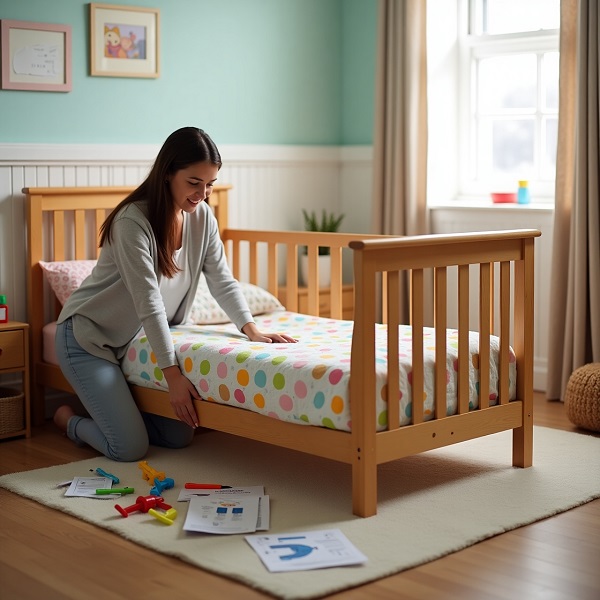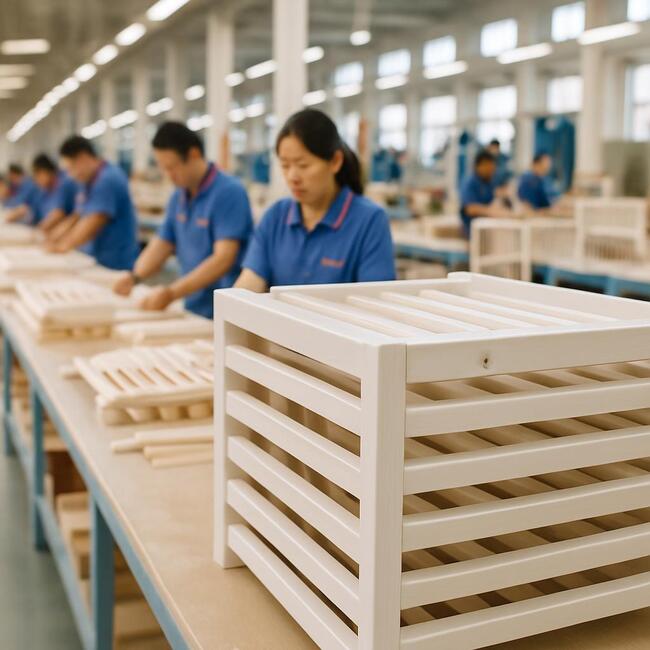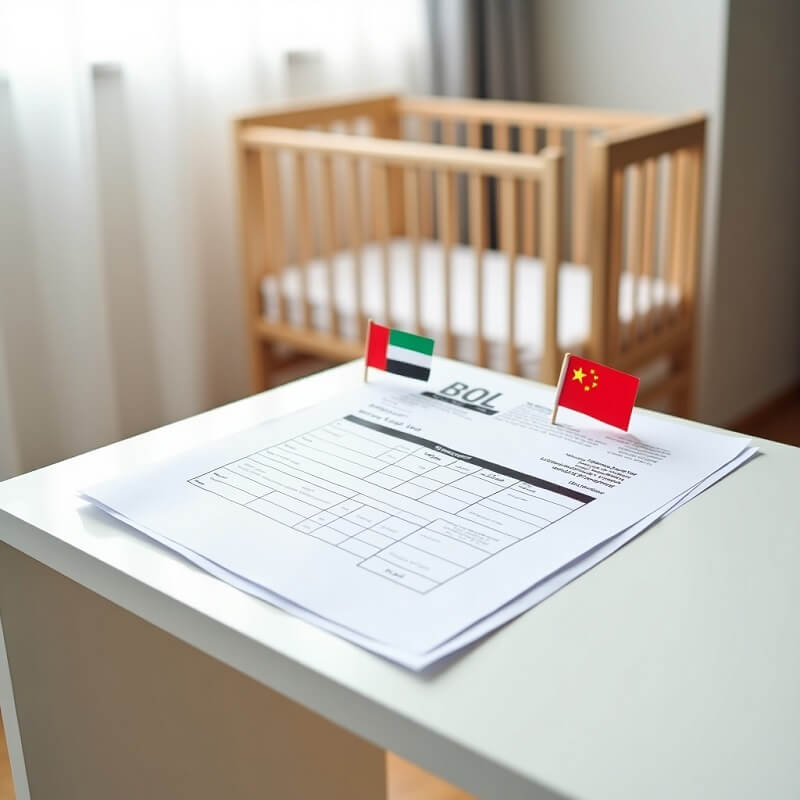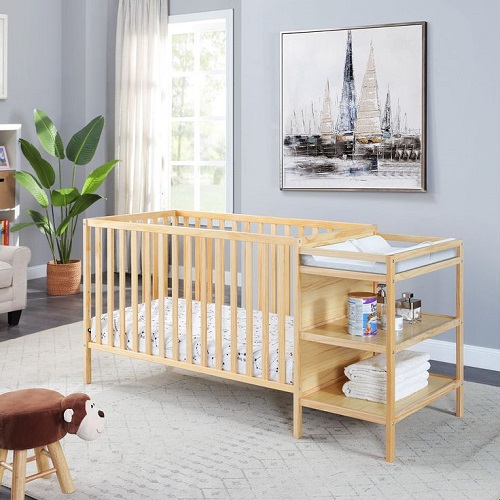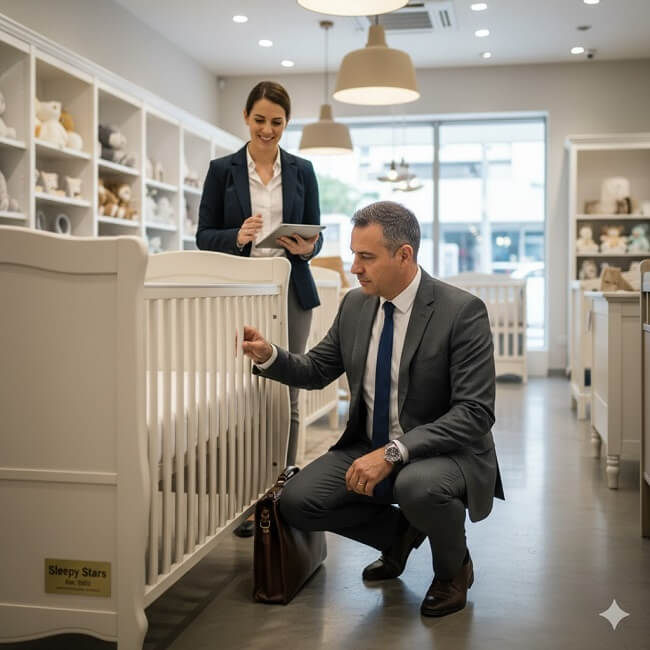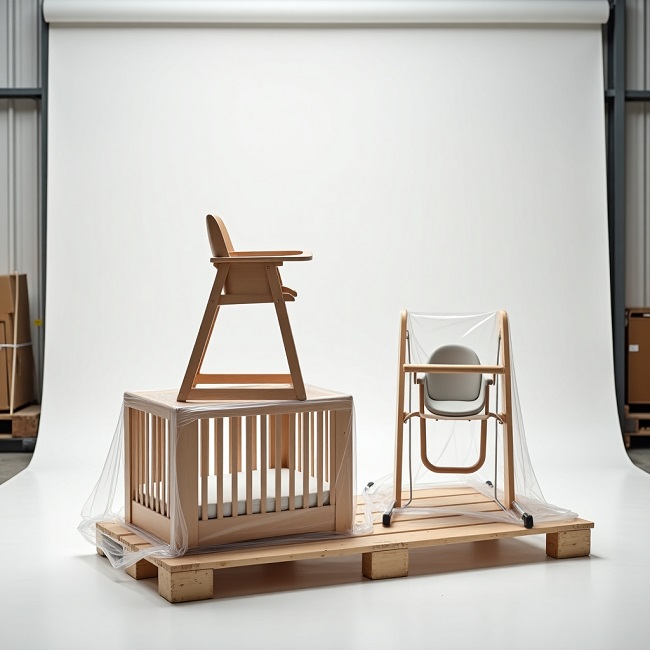When your little one begins to outgrow the crib, it often feels like the end of one chapter and the beginning of another. The crib, once a safe haven for late-night lullabies and countless naps, gradually becomes less practical as your child becomes more mobile, adventurous, and eager to climb in and out. At this stage, many parents start thinking about making the transition to a toddler bed.
It’s a milestone that signals independence, but it also raises a lot of questions: When is the right time? How do you know if your crib can be converted? What steps should you take to ensure the process is both smooth and safe?
In this guide, we’ll walk through everything you need to know about crib-to-toddler bed conversion, from understanding the right timing to practical step-by-step instructions. By the end, you’ll feel confident about making this transition at the pace that suits your child and your family.
At What Age Should You Convert a Crib to a Toddler Bed?
If you’re looking for a single, universal number, you might find yourself a little disappointed. The truth is, the “right” age has less to do with the calendar and more to do with your unique child’s development and safety needs. However, most children make the transition between 18 months and 3 years old.
Safety is by far the most important reason to convert a crib. The first time your curious little one tries to climb over the rail is a clear warning sign. Even an attempted climb can lead to falls and injuries, so making the conversion proactively—before any incidents occur—is the smartest, safest choice.
Beyond safety, your child’s own development offers clues. You might consider the switch if they have started to show signs of potty-training readiness, as being able to get out of bed independently becomes important. Likewise, if your child talks about wanting a “big kid bed” or shows genuine excitement about the change, their enthusiasm can make the transition far easier and more positive.
Can All Cribs Be Converted to Toddler Beds?

The straightforward answer is no, not every crib is designed to become a toddler bed. The ability to convert depends almost entirely on the original design and the manufacturer’s intent behind the crib you purchased.
Cribs that are convertible are typically marketed as such from the very beginning. They are often described as “3-in-1” or “4-in-1” cribs, indicating they are designed to evolve through several stages, starting as a crib, then transforming into a toddler bed, and sometimes even into a daybed or a full-size headboard. These models are built with conversion in mind and usually require a specific conversion kit, which leads us to our next point.
On the other hand, many traditional cribs are designed as standalone products. Their structure is fixed, with stationary sides that are not meant to be removed or altered. Trying to turn a non-convertible crib into a toddler bed—such as by merely removing a side rail—is strongly discouraged.
Such DIY alterations can compromise the structural integrity and safety of the furniture, creating potential hazards like entrapment or collapse. The safety standards for cribs are rigorous for a reason, and it is not worth jeopardizing your child’s well-being to force a conversion.
Do You Need a Crib Conversion Kit?
In almost all cases, the answer is a definitive yes, you will need the specific conversion kit designed for your crib model. When you remove the front panel to create a toddler bed, you are fundamentally altering its structure. The conversion kit provides critical components to restore stability and safety.
This typically includes a new toddler-sized bed rail or guardrail that attaches to the open side of the crib frame. This rail is vital for preventing your child from rolling out of bed during the night and serves as a helpful step for them to climb in and out independently.
Conversion kits usually come with new bolts, screws, and brackets, specifically designed to fit your crib and securely attach the guardrail. Using incorrect or makeshift hardware can create a wobbly, potentially unsafe setup.
A conversion kit is meticulously designed to fit the precise dimensions and threading of its specific crib. Using one from a different manufacturer—or even a different model from the same brand—is unlikely to fit correctly and could create dangerous gaps or instability.
If you no longer have the kit that came with your crib, your best course of action is to contact the crib’s manufacturer directly. Most companies sell these kits separately for this exact reason.
What You’ll Need for a Successful Crib Conversion?
A bit of preparation can make the crib-to-toddler bed transition much easier and far less stressful. By gathering all your tools and materials ahead of time, you can avoid scrambling in the middle of the project with a partially disassembled crib.
First and foremost, you will need the correct conversion kit for your specific crib model, as we discussed. This is the cornerstone of the entire project. In addition to the kit, be sure to have the crib’s original assembly instructions on hand. If the physical manual is lost, a digital version can almost always be found on the manufacturer’s website with a quick search of your model number.
For tools, a basic set will typically suffice. You will likely need a:
- screwdriver (both flat-head and Phillips)
- Allen wrench or hex key set
- A small hammer
To keep everything organized and prevent the loss of tiny but crucial hardware, place a small bowl or magnetic tray on your workspace to hold all the screws, bolts, and washers as you remove them.
How to Convert Your Crib? Step-by-Step
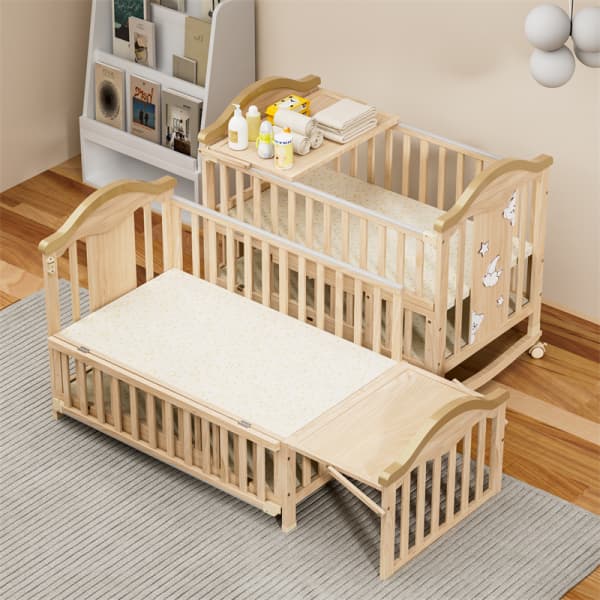
Step 1: Prepare Your Workspace and Materials
Before you begin, gather all necessary items in one place. Clear the crib of all bedding, the mattress, toys, and any other items to give yourself full access to the frame.
Step 2: Document and sort before you loosen anything
Take a few quick photos of the crib fully assembled and close-ups of the hardware connections. As you take the apart, organize the screws and bolts by their original location. This simple step prevents guesswork later and helps you spot if anything is missing.
Step 3: Remove the Crib’s Front Rail
Most conversions start by taking off the front panel. Hold the panel steady as you loosen the bolts to prevent putting strain on the rest of the frame. Place the removed side and its hardware aside together, labeled, in case you ever need to revert or repurpose.
Step 4: Attach the Toddler Guardrail
Start by unpacking your conversion kit and locating the new toddler guardrail. Position it as directed in the manufacturer’s instructions—usually aligning it with the existing brackets or slots on the crib’s side panels. Then, using only the hardware supplied in the kit, firmly attach the guardrail to the frame.
Step 5: Conduct a Thorough Safety Check
After assembly, tighten all connections until they feel firm—snug without over-torquing. Gently rock the bed from different angles; a properly converted frame should remain stable, without swaying or clicking. If you notice any movement, double-check the alignment and hardware installation.
Step 6: Check the Mattress Platform and Fit
Reposition the platform, usually at its lowest safe level, and place the mattress back on top. Ensure it fits snugly on all sides with no gaps. Press along the edges to check that the platform is secure and free from any flexing or creaking.
And just like that, your project is complete! You’ve successfully transformed the crib into a safe, inviting big-kid bed, ready for your toddler to enjoy and explore.
How To Convert a Crib to a Full-Size Bed?
Converting a crib into a full-size bed is a more complex step than transitioning it to a toddler bed. However, not all convertible cribs transition to a full-size bed; some may only convert to a toddler bed or daybed. Assuming your crib has this capability, you will need to purchase a separate full-size conversion kit.
A typical full-size conversion kit includes several key components. It will provide new, longer side rails that are designed to support the dimensions and weight of a full-size mattress and box spring.
The kit will also include new metal brackets or wooden slats to securely attach these rails to the existing crib headboard and footboard, which are repurposed to serve as the headboard and footboard for the new bed.
The conversion process itself involves partially disassembling the crib. The original four-sided crib frame is taken apart. The headboard and footboard are then attached to the new, longer side rails using the provided brackets and hardware, effectively creating a new, larger bed frame that accommodates a standard full-size mattress set.
Given the complexity of the process and the rigor of the infant product, it is recommended to strictly follow the manufacturer’s instructions or manual.
Can I Use the Crib Mattress for a Toddler Bed?
This is an excellent and very practical question. The good news is that, in most cases, you can safely continue using the existing crib mattress when converting to a toddler bed. This is one of the key benefits of transitioning to a convertible crib, as it provides a crucial element of familiarity and comfort for your child during a period of change.
The mattress designed for your crib is engineered to fit its frame perfectly, creating a snug, safe environment without dangerous gaps. Converting a crib to a toddler bed doesn’t change the internal sleeping area—the dimensions stay the same; only the front rail is replaced.
Beyond the perfect fit, there is a significant developmental advantage to keeping the mattress. For your toddler, everything about their sleep space is new and different—the open side, the lower rail, the new perspective. The mattress, however, is a familiar constant. The mattress keeps the familiar feel and scent your child associates with comfort and security.
How to Ensure Safety After Converting the Crib?
Conduct a Thorough Room Safety Audit
Lower yourself to your child’s level and see the room from their perspective. Secure all heavy furniture, such as dressers and bookcases, to wall studs to prevent tipping. Cover electrical outlets with safety plugs, and make sure window blind cords are shortened and completely out of reach. Remove any small decorations, lamps, or objects that could be pulled down or present a choking hazard.
Create a Safe Landing Zone
While the toddler guardrail prevents rolling out, a soft landing can provide peace of mind for both you and your child. Placing a few soft rugs or safety mats on the floor beside the bed can cushion any accidental tumbles during the initial adjustment period.
Establish Clear Sleep Boundaries
Your toddler will quickly learn they can get out of bed on their own, so it is important to gently and consistently reinforce that bedtime is for sleeping. A gentle but firm practice of returning them to their bed if they wander out helps establish this new routine.
Maintain a Safe Sleep Environment
Continue to avoid loose, soft bedding, pillows, and large stuffed animals for children under two, as these can pose a suffocation risk.
Conclusion
Transitioning your child from a crib to a toddler or full-size bed is more than just a furniture change—it’s a meaningful step in their journey toward independence. While it can feel daunting at first, understanding your child’s readiness, knowing whether your crib can be converted, and preparing the right tools and parts make the process manageable and even rewarding.
Whether you’re converting to a toddler bed for the first stage of independence or extending your crib into a full-size bed for long-term use, preparation, attention to safety, and a gentle approach are key.
Recommended Related Articles:
- Are Drop-Side Cribs Safe? What Parents Need to Know
- Crib Recalls 2025: What Parents Need to Know
- Are Crib Bumpers Safe? Latest Pediatric Guidelines
- Crib Alternatives: What Can a Baby Sleep in Besides a Crib?
- Mini Crib Vs Crib: Which Is Best for Your Baby?
- 7 Best Convertible Cribs That Grow with Your Baby (2025)
- Top 10 Crib Manufacturers in China
- Top 12 Crib Manufacturers in the UK

